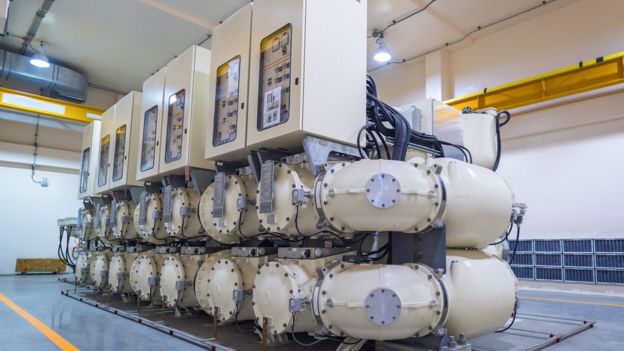It’s the most powerful greenhouse gas known to humanity, and emissions have risen rapidly in recent years, the BBC has learned.
Sulphur hexafluoride, or SF6, is widely used in the electrical industry to prevent short circuits and accidents.
But leaks of the little-known gas in the UK and the rest of the EU in 2017 were the equivalent of putting an extra 1.3 million cars on the road.
Levels are rising as an unintended consequence of the green energy boom.
Cheap and non-flammable, SF6 is a colourless, odourless, synthetic gas. It makes a hugely effective insulating material for medium and high-voltage electrical installations.
It is widely used across the industry, from large power stations to wind turbines to electrical sub-stations in towns and cities. It prevents electrical accidents and fires.

However, the significant downside to using the gas is that it has the highest global warming potential of any known substance. It is 23,500 times more warming than carbon dioxide (CO2).
Just one kilogram of SF6 warms the Earth to the same extent as 24 people flying London to New York return.
It also persists in the atmosphere for a long time, warming the Earth for at least 1,000 years.
So why are we using more of this powerful warming gas?
The way we make electricity around the world is changing rapidly.
Where once large coal-fired power stations brought energy to millions, the drive to combat climate change means they are now being replaced by mixed sources of power including wind, solar and gas.
This has resulted in many more connections to the electricity grid, and a rise in the number of electrical switches and circuit breakers that are needed to prevent serious accidents.
Collectively, these safety devices are called switchgear. The vast majority use SF6 gas to quench arcs and stop short circuits.

“As renewable projects are getting bigger and bigger, we have had to use it within wind turbines specifically,” said Costa Pirgousis, an engineer with Scottish Power Renewables on its new East Anglia wind farm, which doesn’t use SF6 in turbines.
“As we are putting in more and more turbines, we need more and more switchgear and, as a result, more SF6 is being introduced into big turbines off shore.
“It’s been proven for years and we know how it works, and as a result it is very reliable and very low maintenance for us offshore.”



